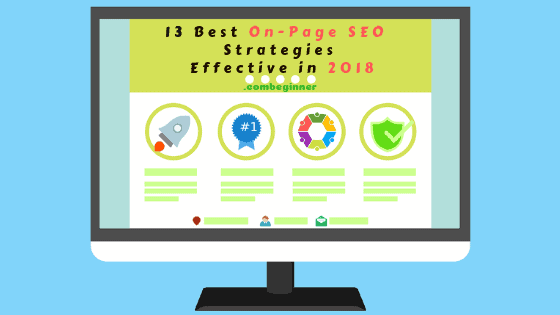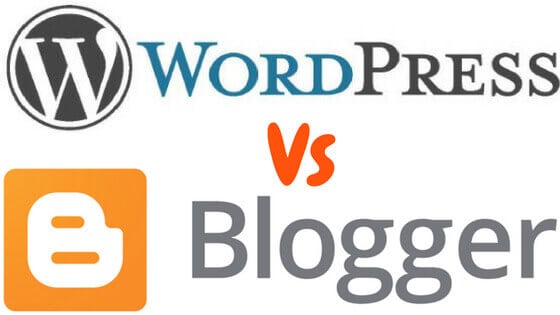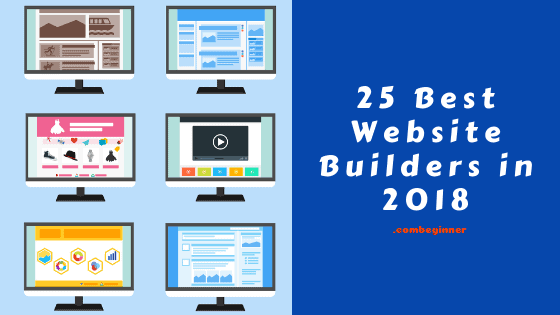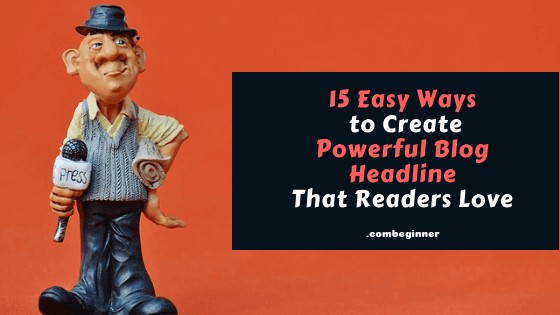Last Updated on January 14, 2023
On-page optimization is a significant part of ensuring your website appears at the top of search engine results. It ensures that the different parts of your website are set up so that search engines will understand and reward your site with better organic rankings. Whether you’re a business owner, marketer, or website developer, understanding on-page optimization is crucial to getting more people to your website.
This guide will explain the different parts of on-page optimization and tips on improving your website’s search engine rankings. It covers everything from ensuring your content is suitable to how your website’s URL is structured. Even if you’re new to SEO or an experienced marketer, this guide will give you a good understanding of on-page optimization and help you create a plan for making your website more visible on search engines.
Key Takeaways (TL;DR)
- On-page optimization is essential for achieving high search engine rankings and providing a positive user experience.
- The main elements of on-page optimization include understanding its role in SEO, content optimization, URL optimization, headings optimization, images, and multimedia optimization, internal linking optimization, meta tags optimization, and page speed optimization.
- Each element plays a significant role for both users and search engines, and by following best practices for each of the elements, you can improve your website’s visibility and performance on search engine results pages (SERPs).
- Good resources for continuing to learn about on-page optimization include Moz and Search Engine Journal, Google’s documentation in the Google Search Console, and various SEO tools such as SEMrush, Ahrefs, and Moz Pro.
- Monitoring and maintaining ongoing optimization, adhering to web performance best practices, and optimizing with the user’s device and network in mind are all critical.
- For content optimization, using relevant keywords in the content can help search engines understand the topic and theme of your website. It’s also a good idea to create high-quality, unique content.
- For URL optimization, using keywords in URLs and making sure that they are short and descriptive can help improve visibility and ranking.
- For Headings Optimization, using keywords in headings can help search engines understand the topic and theme of your website, and structuring them using HTML headings tags (H1, H2, H3, etc.) is essential.
- For Images and Multimedia Optimization, compressing files and using descriptive file names and alt tags can help improve page speed and visibility.
- For Internal Linking Optimization, Using keywords in the link text, linking to relevant and relevant pages, and using a clear and consistent linking structure can help improve navigation and distribution of link equity.
- For Meta Tags Optimization, using keywords in the title tag and meta description, keeping meta tags concise and accurate, and using canonicals can provide the necessary information to search engines and improve the visibility of your website.
- For Page Speed Optimization, compressing files, reducing HTTP requests, using a Content Delivery Network (CDN), hosting a website with a reputable hosting provider, and using caching plugins.
🌟 Understanding On-Page Optimization
On-page optimization is making changes to your website’s content, structure, and code to make it more appealing to search engines and improve how it shows up on search engine results pages (SERPs). This includes things like making sure your website’s content is good, your URLs are easy to understand, your headings are set up correctly, and your images and videos are optimized.
On-page optimization is really critical for search engine optimization (SEO) because it helps search engines understand how relevant and trustworthy your website is. When a search engine looks at your website, it uses a complicated algorithm to decide how relevant and trustworthy it is in relation to a specific search query.
There are a few things that are especially important for on-page optimization, like:
- Content quality and relevance: Search engines like websites that have high-quality and relevant content that’s useful for people. They also tend to rank websites higher that regularly update their content.
- Keyword usage: Using keywords in different parts of your website, like your content, headings, meta tags, and URLs, helps search engines understand what your website is about.
- Headings: A headings structure helps the search engine and users understand the main topics the website, blog post, or page is about.
- User experience: Search engines also take into account how easy your website is to use and how quickly it loads, among other things, to decide how relevant and trustworthy it is.
- URL Structure: Having a clear and concise URL structure that uses relevant keywords can also help search engines understand a website’s content.
- Backlink: The website’s backlinks from other websites also tell search engines about the website’s authority.
All these things are taken into account by search engine algorithms, which are often updated to improve the results. On-page optimization makes sure that your website is aligned with the algorithms and the best practices and keeps it updated with algorithm changes.
🌟 Content Optimization
Content optimization is another significant part of on-page optimization. It ensures your website’s content is high-quality, relevant, and unique. This is essential for both people who visit your website and search engines. Making sure your content is good helps your website show up higher in search engine results pages (SERPs) for specific search queries.
So when you’re creating content for your website, here are a few things to keep in mind:
- Quality over quantity: The content on your website should be well-written, accurate, and informative. It should also be free of spelling and grammatical errors.
- Relevancy: The content on your website should be relevant to the overall theme of your website and to the specific search queries that you want to rank for.
- Fresh and unique: The content on your website should be unique and not copied from other sources. This is essential to avoid duplicate content issues and to establish the website as an authority in the field.
You need to keep in mind that creating high-quality, relevant, and unique content is not a one-time task. It’s an ongoing process that requires regular updates, maintenance, and improvement. Also, following a good content strategy will help in creating consistent and effective content.
In addition to these general rules, you can also use some specific techniques to make your content better for search engines. These include:
- Keywords optimization: By using relevant keywords in the content of your website, you can help search engines figure out what your website is about and its main idea. However, it would be best if you used keywords in a natural and subtle way and did not overuse them, as this can negatively impact the user experience.
- Make use of heading tags: Headings help to structure the content and make it more readable for users. They also signal to search engines the main topics of the page.
- Using meta descriptions: Meta descriptions provide a summary of the page’s content and are often used by search engines as the snippet for the page in the SERP.
- Optimizing images and videos: Images and videos can enhance the user experience, but you should optimize them to ensure fast loading. This includes compressing the images and providing descriptive file names and alt tags.
🌟 URL Optimization
URL optimization involves making changes to the structure and format of your website’s URLs to make them more visible and to help them rank higher on search engine results pages (SERPs). URLs are another important part of on-page optimization because they can have a big impact on both how people use your website and how search engines see it.
Here are some best practices for optimizing your URLs that can help improve your website’s search engine rankings:
- Use keywords: Include relevant keywords in your URLs so that search engines can understand what the website/web page is about. But be careful not to overdo it, as this can make it harder for people to use your website.
- Keep URLs short and descriptive: Short and descriptive URLs are easier for both people and search engines to understand and less likely to be cut off in SERPs.
- Avoid dynamic parameters: Some websites use dynamic parameters in their URLs to track user sessions or other information. These can be confusing for both people and search engines, so it’s best to avoid them.
- Avoid special characters: Special characters like #, &, and ? can confuse search engines. It’s best to avoid them in your URLs.
- Use hyphens to separate words: To separate words in your URLs, use hyphens instead of underscores. This makes them easier for both people and search engines to read and understand.
- Canonical URLs: If your website has multiple versions of the same page, make sure to tell search engines which one is the “real” one, so they don’t get confused.
URL optimization is important not only for search engines but also for people who use your website. A well-structured URL that is easy to read and understand can make it easier for people to navigate and find what they’re looking for on your website.
🌟 Headings Optimization
Headings help in organizing and structuring the content of a website. They make it easier for both people and search engines to read and navigate the website. There are six different levels of headings in HTML, with H1 being the most important and H6 being the least significant. You need to make sure to use headings correctly and to use them to structure the content, and indicate the most relevant parts of the text.
Here are some tips for creating optimized headings:
- Use only one H1 per page: The H1 tag should be used as the main heading for a page and only be used once per page.
- Use headings to structure the content: Use headings to break up the text into sections and to indicate the most important parts of the text.
- Use keywords in headings: Incorporating relevant keywords into the headings can help search engines understand the topic and theme of your website.
- Keep headings concise: Headings should be short, descriptive, and to the point.
- Use the right heading level: Use H1 for the main heading, H2 for the main subheadings, and so on.
When you use headings correctly, you can not only improve the user experience, but you can also tell search engines what the page’s main topic is. It is an important aspect of on-page optimization that can help improve a website’s visibility and ranking on search engine results pages (SERPs). Use the right HTML tags (H1, H2, H3, etc.) to indicate the hierarchy of the headings to the search engine. This will help search engines understand the content and context of the page better.
🌟 Images and Multimedia Optimization
Optimizing images and multimedia is part of making sure your website is easy to use and looks good. Images and multimedia like videos and audio can make your website more interesting and engaging, but if they’re not optimized properly, they can slow down your website and make it harder to use.
Here are some tips for optimizing images and multimedia:
- Compress files: Make the files smaller so they load faster.
- Use descriptive file names: Give your images and multimedia file names that describe what they are, so search engines and people can understand them better.
- Use alt tags: Alt tags are like captions for images and multimedia; screen readers and search engines can read them.
- Properly sized images: Make sure the images are the right size for the website.
- Use a Content Delivery Network (CDN): A CDN can help distribute images and multimedia files to multiple servers, improving their loading time.
You need to remember that images and multimedia are great, but they should be used in balance. Not all pages need images and multimedia, and too many of them can slow down your website.
🌟 Internal Linking Optimization
Internal linking is crucial when it comes to ensuring your website’s on-page SEO is on point. Internal linking is when you link one page on your website to another page within the same website. This can help visitors find related content easily, and it also helps search engines understand how your website is structured.
Here are some tips for creating the best internal links:
- Use keywords in the link text: This helps search engines understand what the linked page is about.
- Link to relevant pages: This helps visitors find what they’re looking for and helps search engines understand which pages on your website have the highest weightage.
- Use a clear and consistent linking structure: This makes it easy for visitors to navigate your website and helps search engines understand how your website is organized.
- Use the “nofollow” attribute for links that don’t need to pass link equity: This is helpful for pages that don’t need to pass along importance, like legal pages.
- Monitor the number of links: Too many links on a page can dilute link equity, so ensure a moderate number of links per page.
By following these tips, your website’s internal linking will be stronger and easier for visitors and search engines to navigate and understand.
🌟 Meta Tags Optimization
Meta tags are like little labels you put on your website to tell visitors and search engines what your pages are all about. They’re a crucial part of making sure your website shows up well in search engine results, and they’re easy to add to your website’s code.
There are a few types of meta tags that are commonly used for SEO:
- Title tags: These are the words that appear in the tab at the top of your browser and are also used as the title of your webpage in search engine results.
- Meta descriptions: These are short summaries of your webpage that show up in search engine results. They’re a chance to convince people to click on your link.
- Canonicals: These tags help search engines understand which version of your page is the main one, in case there are multiple versions floating around out there.
When you’re creating meta tags, you should keep a few things in mind:
- Use keywords: Put words that are relevant to your webpage in your title tag and meta description. This helps search engines understand what your page is about.
- Keep it short and accurate: Your title tag and meta description should be short and to the point and accurately describe what’s on your webpage.
- Use them on every page: Every page on your website should have its own title tag and meta description. This helps search engines understand what’s on each page.
- Use canonicals: If you have multiple versions of the same page, use canonicals to tell search engines which one is the main one.
It’s worth noting that meta tags are mostly for the benefit of search engines, but they can also give visitors a quick summary of what your page is about. Some meta tags, like “meta keywords,” aren’t as important as they used to be because they don’t provide any real value to visitors, and search engines don’t use them anymore.
🌟 Page Speed Optimization
Optimizing page speed is all about making your website load as quickly as possible. This is essential because a website that loads quickly provides a better experience for users and can also improve search engine visibility.
When a website loads fast, users are more likely to stay on the site, explore more pages, and even convert. On the other hand, a website that loads slowly can cause users to lose patience and leave the site, which can result in a high bounce rate and fewer conversions.
Search engines also take page speed into consideration when ranking a website on search engine results pages (SERPs). Websites with faster page speeds are more likely to rank higher than those with slower page speeds.
To improve page speed, there are a few things you can do;
- Compress files: Compressing images, videos, and other files can help reduce their file size, making them faster to load and improving the website’s page speed.
- Reduce HTTP requests: Reducing the number of HTTP requests can help to improve page speed; this can be achieved by combining multiple files into one and reducing the number of images and scripts used in the webpage.
- Use a Content Delivery Network (CDN): A CDN can help distribute the files to multiple servers, improving their loading time, especially for users located far away from the origin server.
- Use a good hosting provider: A good hosting provider can provide a fast server and the necessary resources to handle the website’s traffic; this is required to have a stable page speed.
- Use a caching plugin: A caching plugin can save a copy of the page in the user’s browser, so the page doesn’t need to be loaded again for the next visit.
You should remember that page speed optimization is an ongoing process that needs to be checked and fixed regularly. Also, it’s important to follow best practices for web performance and think about the user’s device and network when optimizing.
✍🏽 Conclusion
In conclusion, on-page optimization is a critical aspect of search engine optimization (SEO). By making changes and adjustments to a website’s content, structure, and code, we can make it more attractive to search engines and improve its visibility on SERP.
In this on-page SEO guide, we’ve talked about different parts of on-page optimization, such as content optimization, URL optimization, heading optimization, image and multimedia optimization, internal linking optimization, meta-tag optimization, and page speed optimization. Each of these things is important for both users and search engines, and if we stick to the best practices we talked about, we can make our website more visible and help it do better on SERPs.
Suppose you’re looking to learn more about on-page optimization. In that case, there are many resources available, such as Moz, Search Engine Journal, and Google Search Console, that can provide in-depth guides and articles on SEO topics, as well as SEO tools like SEMrush, Ahrefs, and Moz Pro that can provide useful insights and recommendations.





